Fish Hooks Item Number: E2248-0 from the National Museum of Natural History
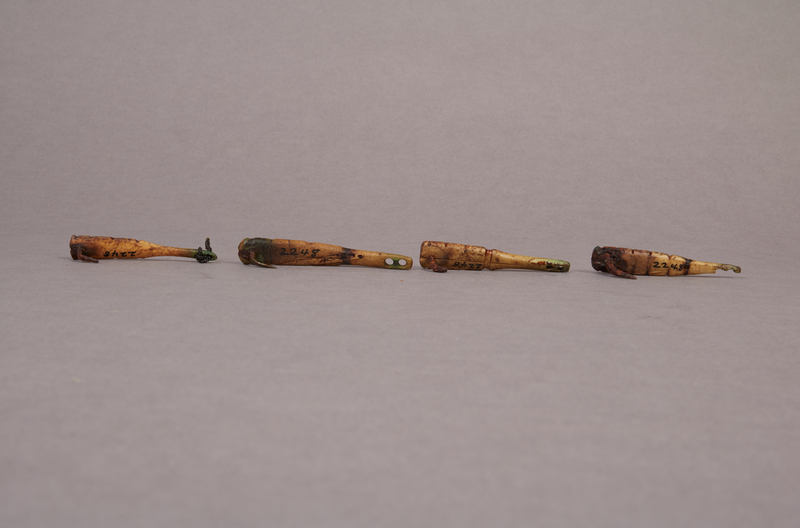

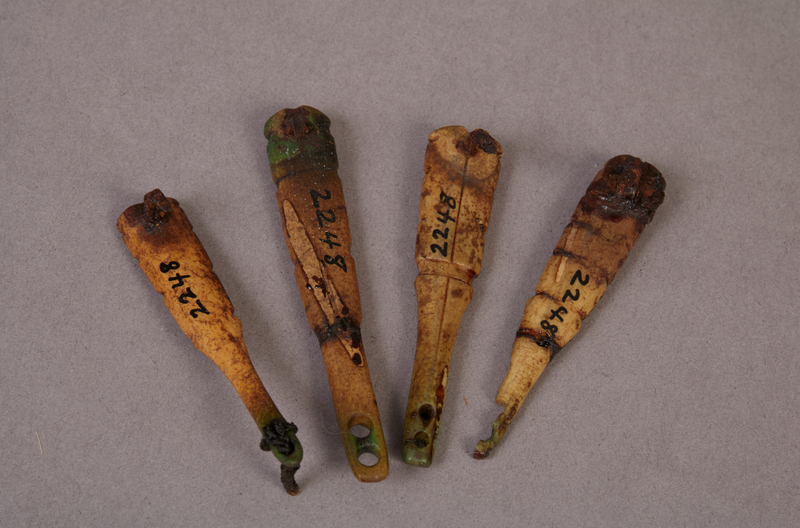
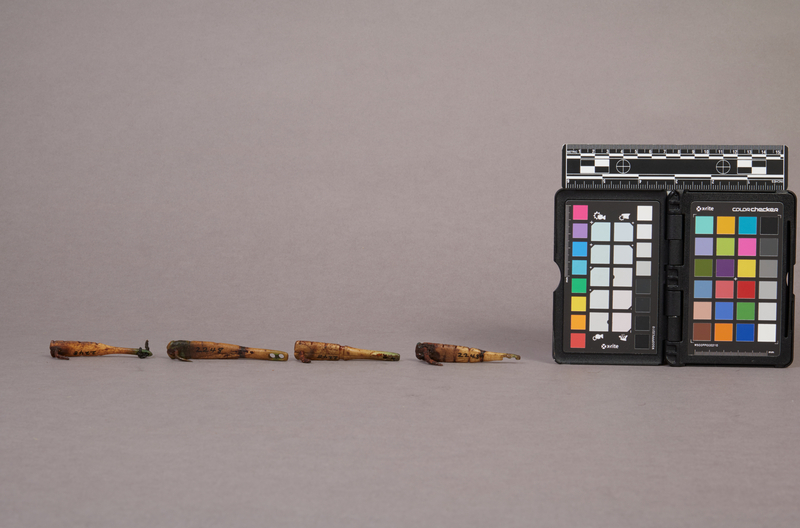
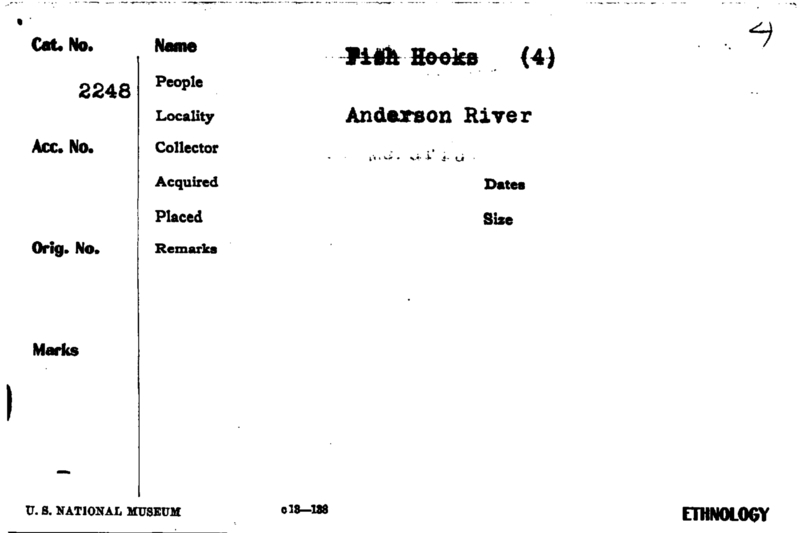
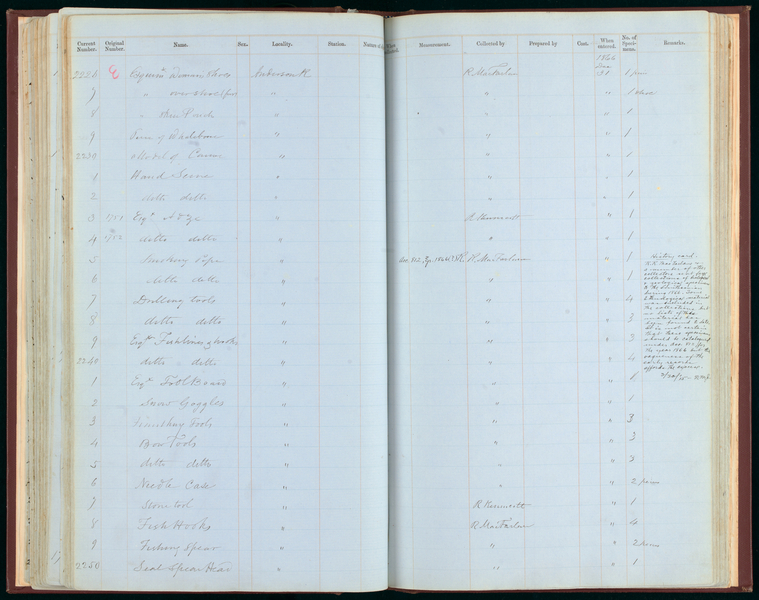
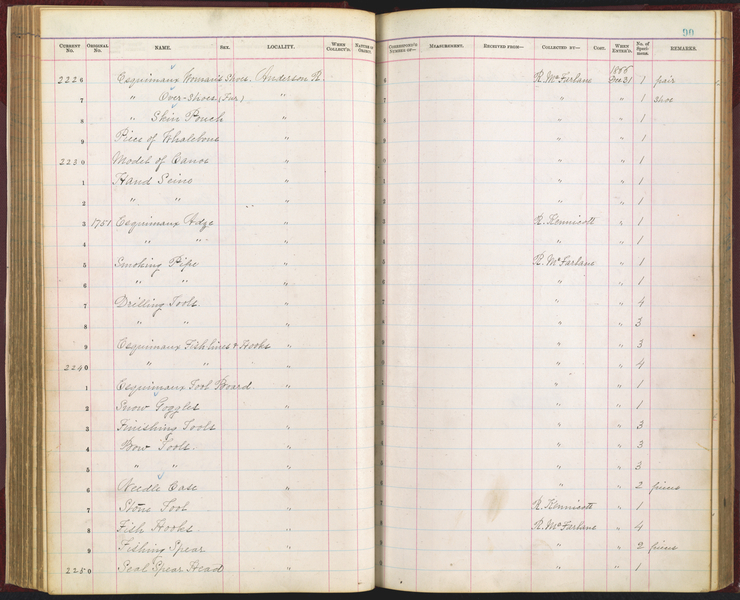
Notes
Source of the information below: Inuvialuit Pitqusiit Inuuniarutait: Inuvialuit Living History, The MacFarlane Collection website, by the Inuvialuit Cultural Resource Centre (ICRC), Inuvik, N.W.T., Canada (website credits here http://www.inuvialuitlivinghistory.ca/posts/12 ), entry on this artifact http://www.inuvialuitlivinghistory.ca/items/61 , retrieved 1-3-2020: Four fish lures with antler shanks and iron hooks. The shank of each lure has two holes drilled through its narrower end for attachment to fishing lines; one lure has a short length of braided sinew still attached to it. The lures are stained green near these holes. This typically is produced by contact with copper, and it is possible that at one time these lures were strung on a piece of copper wire. Each shank is notched along its edges, and one has a shallow bed encircling it. These features would have been used for tying fish skin bait or stone weights to the lures. One of the lures has glass beads inserted in two shallow holes near the hook, in imitation of fish eyes. More information here: http://www.inuvialuitlivinghistory.ca/item_types/21: Fishing tackle was used for catching fish in rivers and streams during the open water season, and for jigging through holes chiseled through ice in winter and spring. Fishing tackle in the MacFarlane Collection includes fishing rods (iqaluksiun) with lines (ipiutaq) made from baleen, and bone and antler lures (niksik) with iron hooks. Less commonly, fishhooks were made from wood.
Item History
- Made in Northwest Territories, Canada
- Collected in Northwest Territories, Canada
- Received from Roderick R. MacFarlane on December 21, 1866
What
- Name
- Fish Hooks
- Identification Number
- E2248-0
- Type of Item
- fish hook
Who
- Culture
- Eskimo, Inuit and Inuvialuk
- Received from
- Roderick R. MacFarlane
Where
- Holding Institution
- National Museum of Natural History
- Made in
- Northwest Territories, Canada
- Collected in
- Northwest Territories, Canada
When
- Acquisition Date
- on December 21, 1866
Other
- Accession Number
- 66A00090